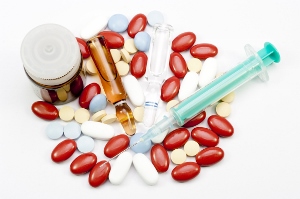
Here are some reimbursement related reasons why access to biosimilars has been slower than hoped, even though patient out-of-pocket costs are lower.
Current System Is an Improvement Over Earlier System, But Could Be Better
Part B Is For Biologics (and Some Drugs)
When I was working at the Senate Legislative Counsel’s office drafting the Average Sales Price reimbursement system, biologics had unlimited exclusivity. Medicare had been paying 95 percent of the Average Wholesale Price (AWP) even when commercial insurers were paying 70 percernt of AWP or even less. Congressional staff joked that AWP stands for “Ain’t What’s Paid.” So, the move to an average sales price that accounted for the commercial discounts was a vast improvement over the earlier system.
Part D Is For Drugs (and Some Biologics)
At the same time, we were working on Medicare Part D. For self-administered outpatient drugs, competition could work to lower prices through the development of formularies, bidding and market-based negotiations. Because manufacturers of biologics under Medicare Part B had a monopoly, competition could not work in the same way it could under Medicare Part D.
Biosimilars Are Changing the Single Source World
Currently, biosimilars are changing that single-source world and physicians have alternatives where before there were none. It is time to rethink Medicare reimbursement for physician-administered drugs. Just like we took a step forward in reimbursing based on ASP instead of AWP, the time has come to take another step.
How Biosimilars Are Reimbursed Now
How do you shift from a Medicare Part B world without competition to a competitive one? In what I see as an interim step, Congress legislated that Medicare reimburses each biosimilar at its average sales price plus six percent of the average sales price of the reference biologic.
Congress’ hope was that adding the six percent of the biologic would equalize the physician’s financial incentives to choose either the biologic or the biosimilar and free them to choose whichever product was best for their patient. However, this does not actually de-link physician reimbursement from drug prices because of discounting and contracting strategies.
This only applies to biologics and biosimilars that are usually administered by a physician. Right now, all the biosimilars marketed in the U.S. are this kind. Self-administered biologics and biosimilars are reimbursed under Medicare Part D – for example, a biosimilar version of Humira (adalimumab) will be reimbursed this way when it launches in the U.S. in 2023.
What Patients Pay
For patients, Medicare Part B charges a 20 percent coinsurance payment, which can be significant for biologicals that can cost more than $1,000 per day. Most, but not all patients have supplemental insurance that can pay the coinsurance. For Medicare Part D, cost-sharing depends on the patient’s annual drug spending but does not allow supplemental insurance to help pay for that cost-sharing.
Under both programs, in general, lower biologic and biosimilar prices will translate to lower patient out-of-pocket expenses.
Issues that Distort Reimbursement Policy
Why haven’t biosimilars gained more market share if doctors make the same amount of money and patients pay less? There are a lot of reasons, but here are three key ones to consider:
- Volume-based discounts – the average sales price is an average. Manufacturers can offer volume-based discounts that increase physician margins beyond six percent, but also incentivize them to only use one product. On the insurance side, it can cause insurers to impose step therapy to reap financial rewards by hitting volume targets, but without any supporting medical rationale.
- Bundled discounts – offering discounts on biologics coupled with discounts on other products.
- Long-dated contracts – enter into three-year contracts on the eve of a biosimilar launch to keep group purchasing organizations, PBMs and insurers from paying for the biosimilar.
With the discount strategies, the new biosimilar that does not yet have market share cannot discount to a point where it could offset the lost rebates. This creates a real barrier to entry.
And so, the biosimilar has the challenge of having to shift enough of the market share from the incumbent product onto the biosimilar to offset those lost rebates, and that is nearly impossible.
A Reliable Reimbursement System Will Drive Innovation and Save Money
As policymakers work to promote biosimilar access under Medicare Part B, they should also look toward the future to foster competition in Medicare Part B like we have today in the small molecule world under Part D, which will drive innovation while resulting in savings for the government and, most importantly, patients.
